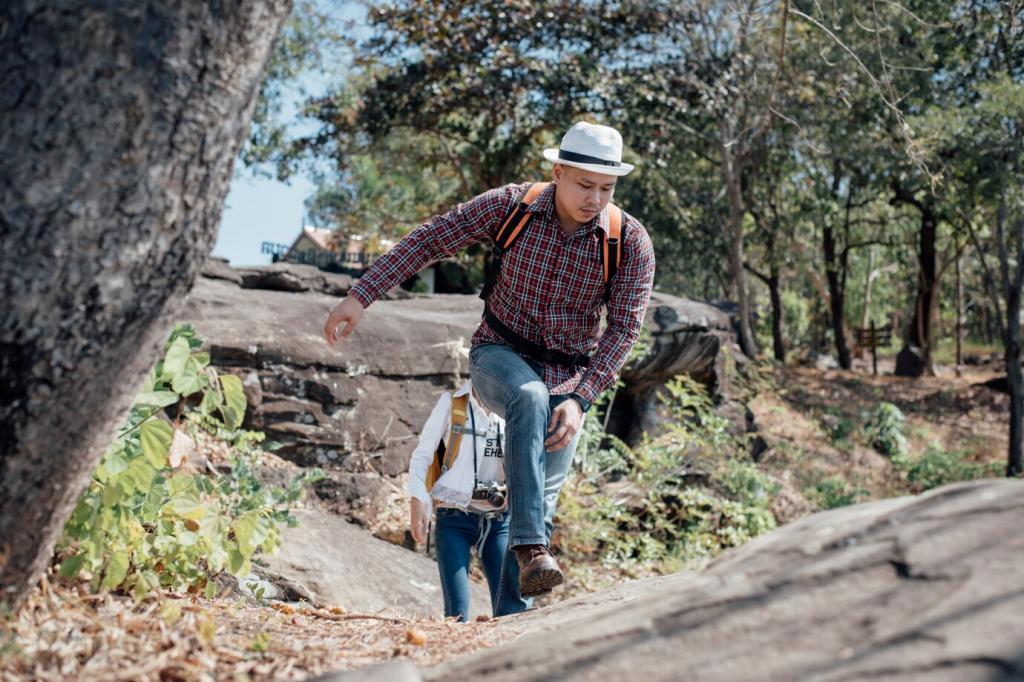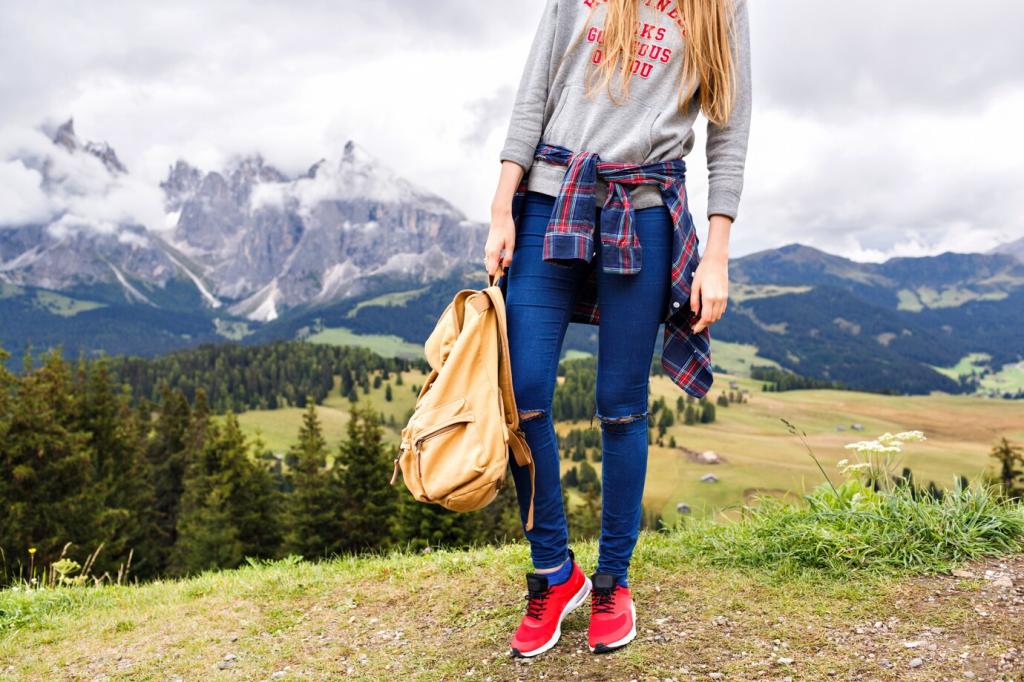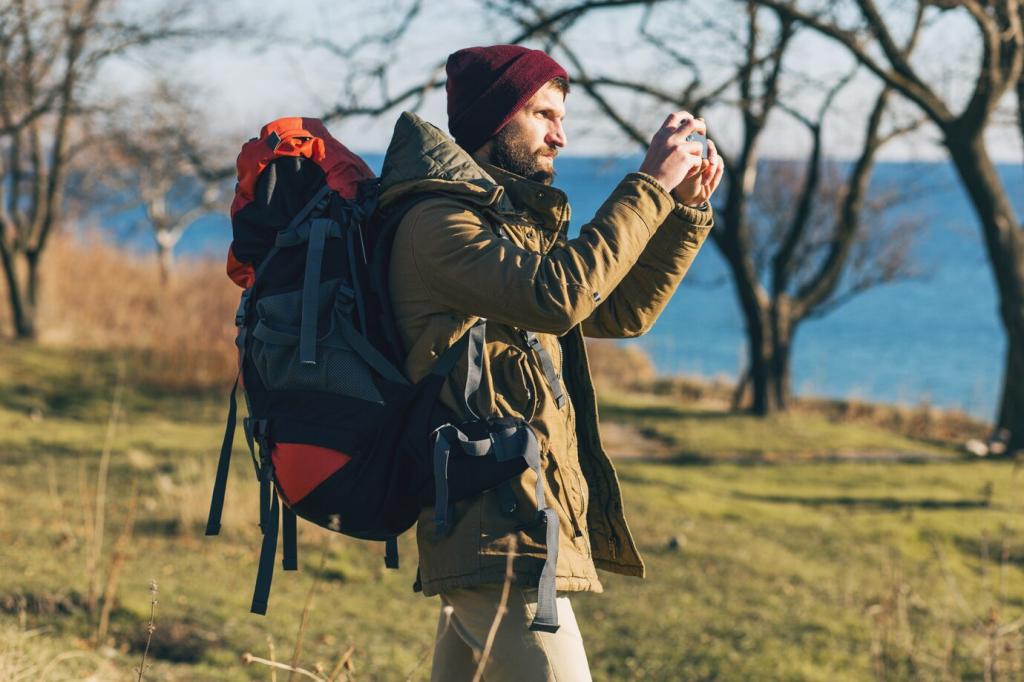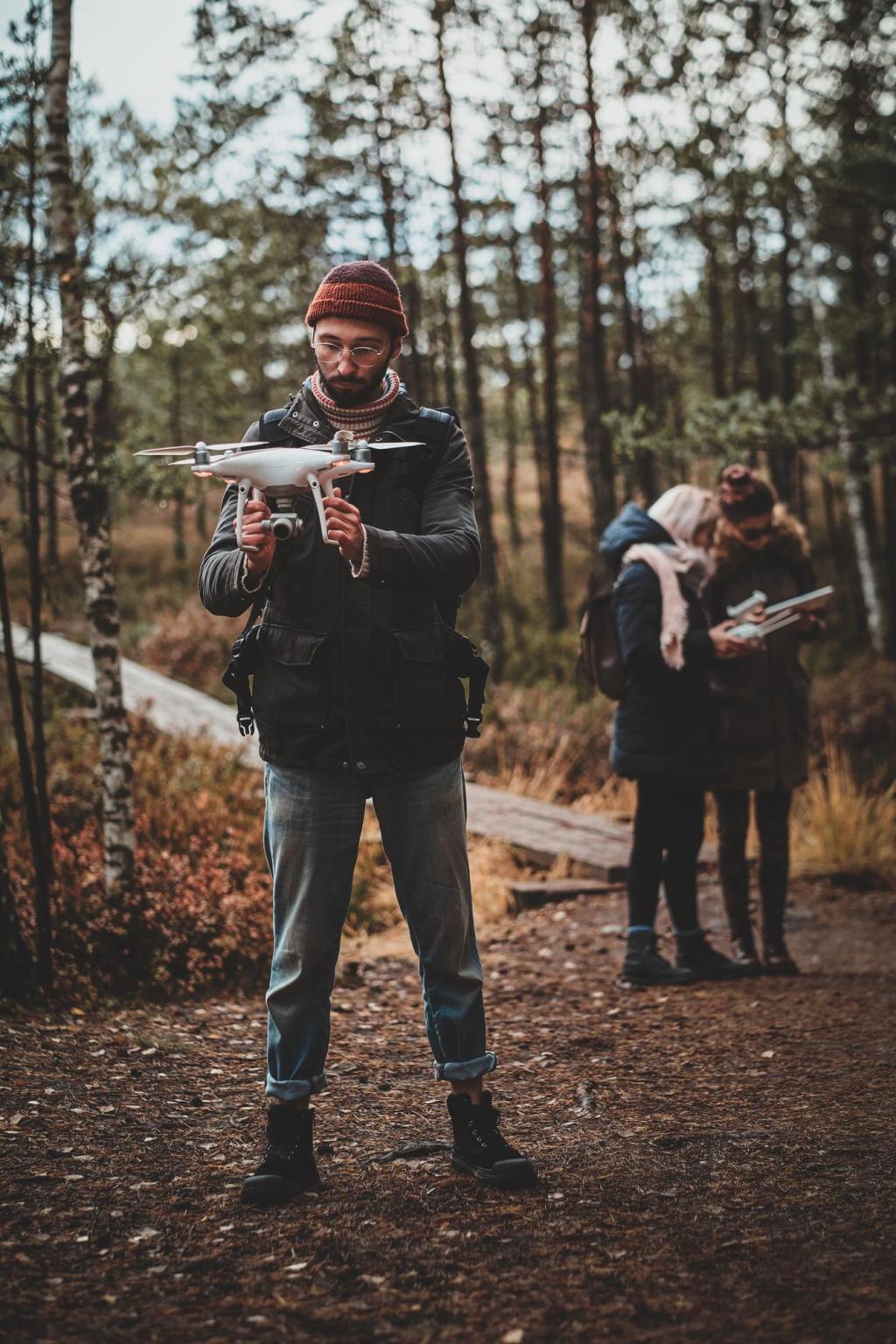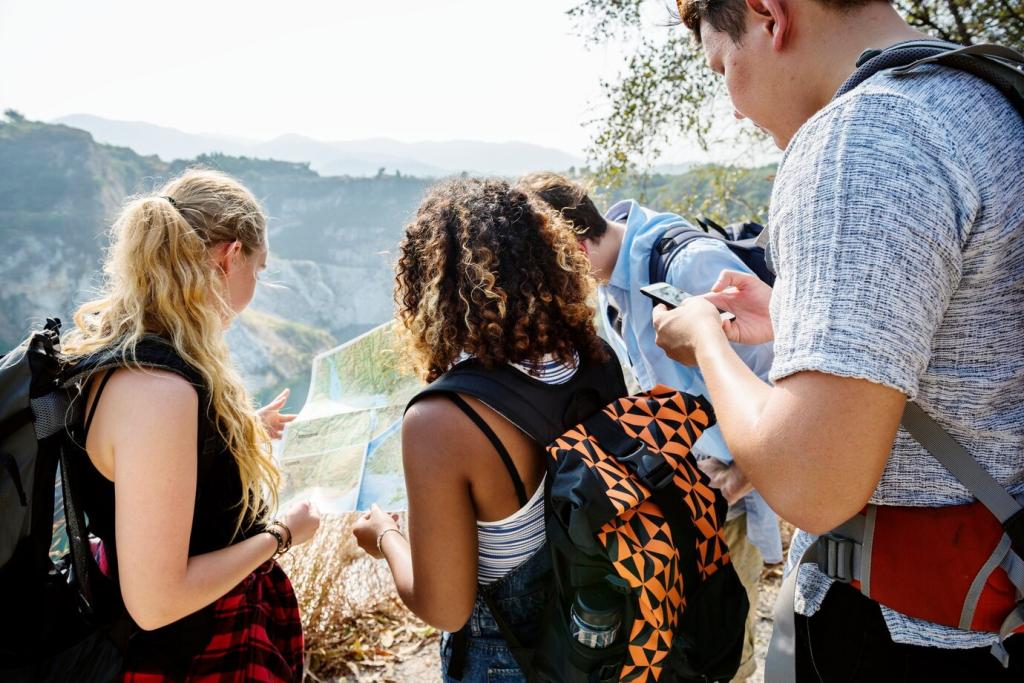Low-Impact Techniques on Every Step
Walk through shallow mud rather than around it to prevent trail braiding. Choose rock hops where available, and avoid skirting vegetation. Short steps improve balance and traction. Share your favorite muddy‑day tip, and help beginners learn that messy shoes mean healthier trails.
Low-Impact Techniques on Every Step
Pack out all tissue and hygiene products. Where allowed, dig a 6–8 inch cathole 200 feet from water, trail, and camp. In sensitive zones, use wag bags. Leash pets and pack out dog waste. Post your best microtrash find to inspire five‑minute cleanups.

